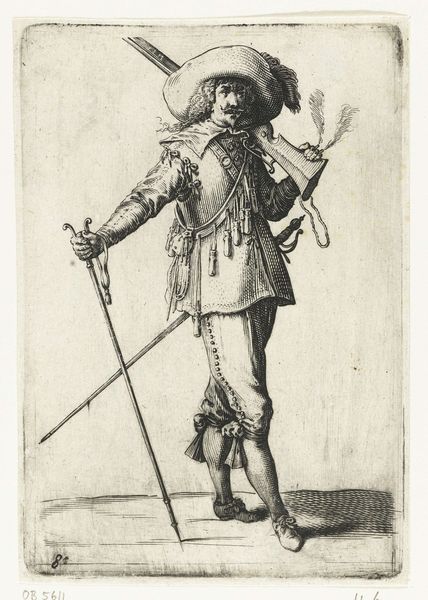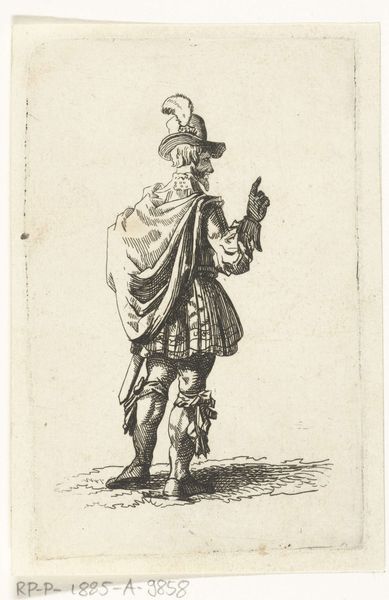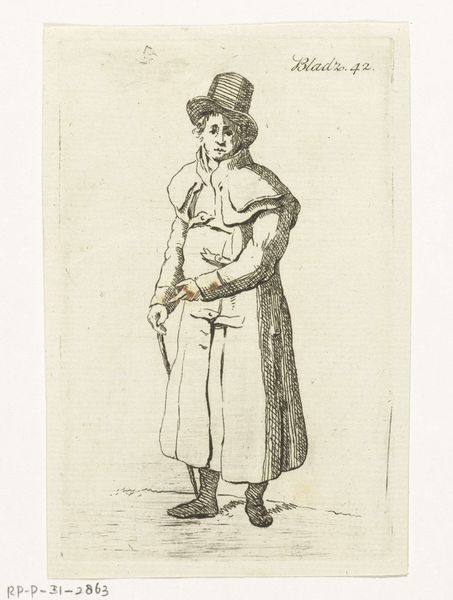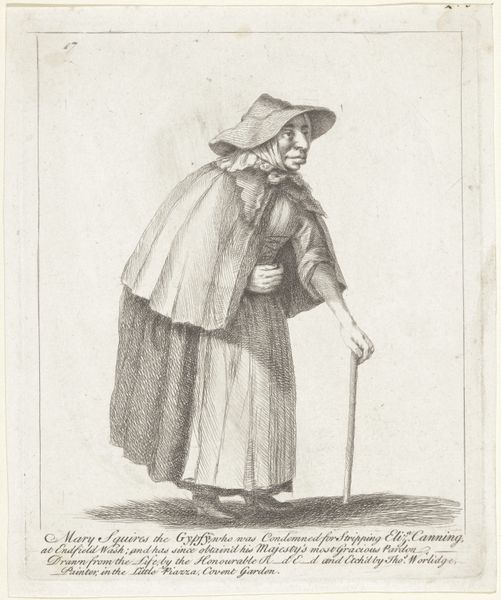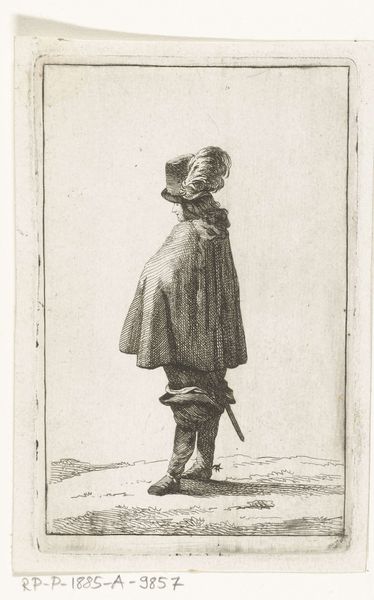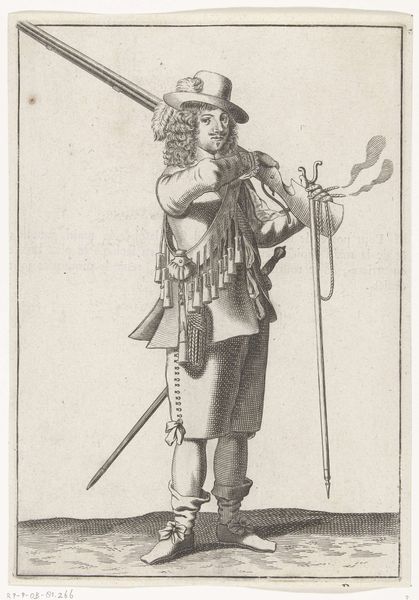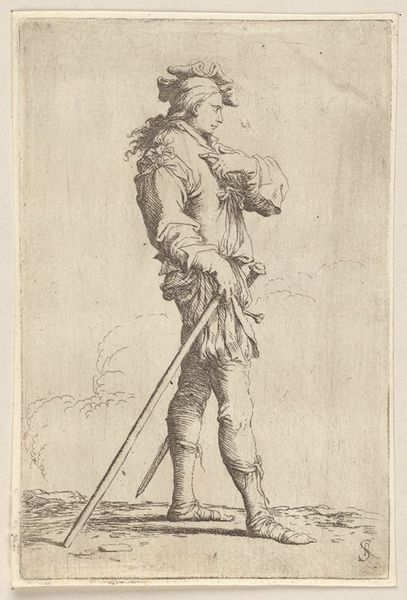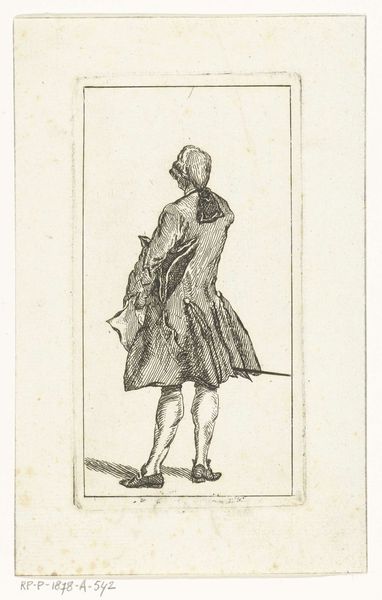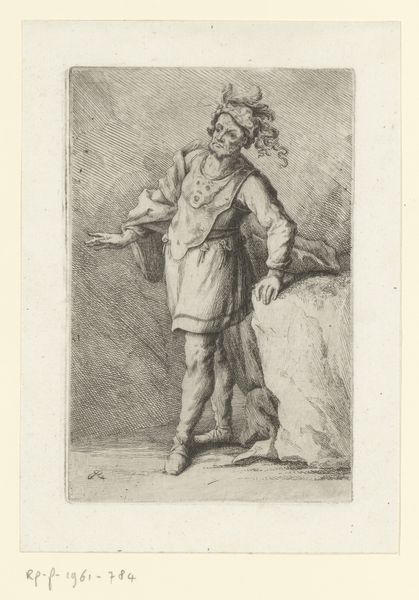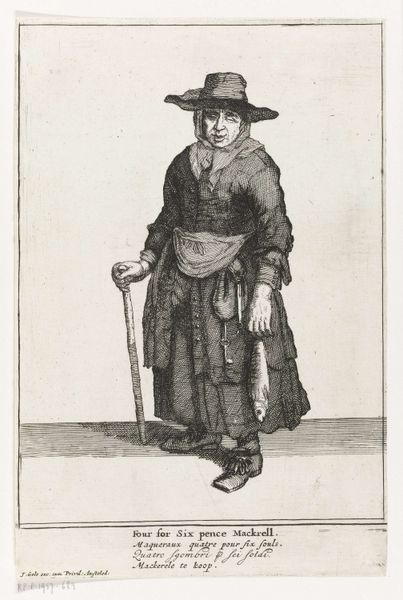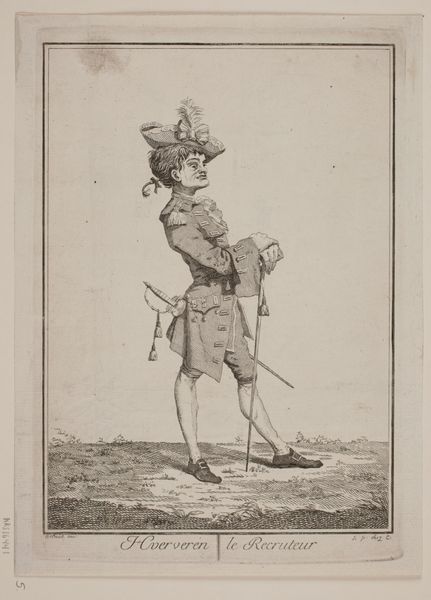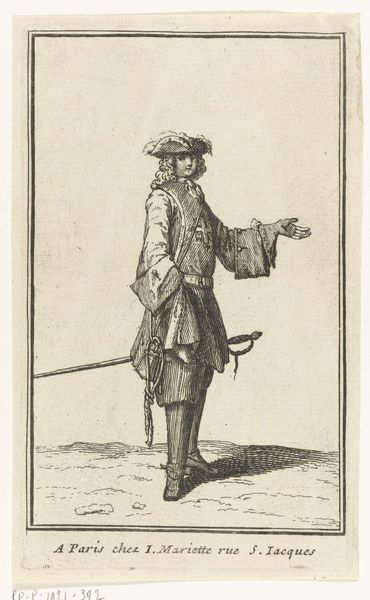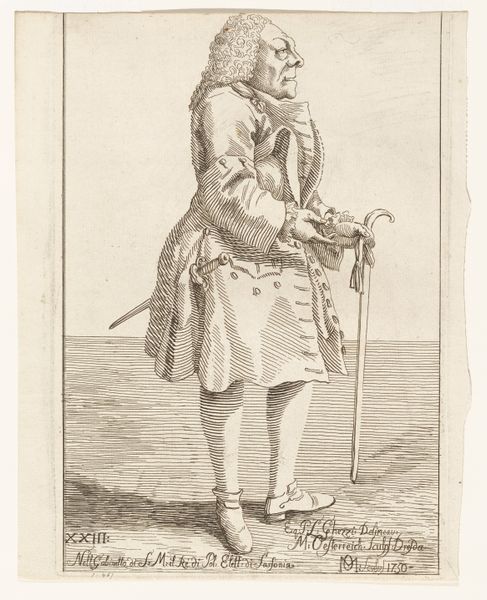
engraving
#
baroque
#
pencil sketch
#
old engraving style
#
line
#
engraving
#
rococo
Dimensions: height 190 mm, width 150 mm
Copyright: Rijks Museum: Open Domain
Curator: How do you see Michel Barthélémy Ollivier's "Young Man with Beret and Stick," made sometime between 1722 and 1784 using engraving? I’m intrigued by the rococo style in monochromatic lines. What catches your eye? Editor: It's fascinating. The figure seems almost theatrical, but I’m really drawn to the precision of the engraved lines that create texture and depth. How can we relate this work to its era in terms of the materials and production? Curator: This is exactly where the richness lies. Consider the engraving process itself, a labor-intensive method reliant on skilled artisans to reproduce images for a wider audience. Before photography, this was how images were disseminated. Now, the “Young Man’s” dress is also really important. The textiles, the hat’s feathers; they signal social status. Think about where the artist might have sourced his materials, or who he made the prints for? Editor: So, you are pointing out the interesting contrast between the labor put in to make and print the engraving with the lifestyle suggested by the rich garments of the character. Curator: Precisely! The engraving becomes a commodity itself. These weren't created in a vacuum, but as objects of cultural and economic exchange. Think of this piece within a system of production and consumption. Who profited from prints such as these, and how did these prints contribute to circulating ideas about class? Editor: I never considered prints in terms of mass consumption. So, how can that influence our perspective? Curator: Considering production can reveal who had access to this art and how its circulation shaped social norms or perhaps challenged them. Did it reproduce social standing or enabled new ones? It can even open discussions on today’s modes of consumption. Editor: Thanks, you have made me reconsider printmaking’s accessibility in relation to status! Curator: The beauty lies in interrogating the artwork as an object embedded in a larger social and economic framework, unveiling hidden stories behind its creation and reception.
Comments
No comments
Be the first to comment and join the conversation on the ultimate creative platform.
